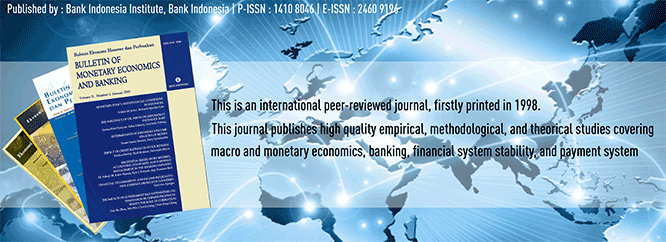
Document Type
Article
Abstract
This paper analyzes the excess liquidity especially on banking industry and its impact on monetary policy in Indonesia. We firstly investigate the determinants of bank behavior on their favor for excess liquidity both for precautionary motive and involuntary. Furthermore we determine the threshold between the low and high excess liquidity regimes. On the next step, this paper evaluates and compares the impact of excess liquidity on monetary policy between the two regimes. The first result shows that the excess liquidity on bank with their precautionary motive is significantly determined by the volatility of money demand, the volatility of economic growth, the bank cost of the bank, and also by the lag of excess liquidity, which conform its persistence. Secondly, using the Threshold-VAR approach, this paper shows the switching regime occurs in 2005 from low to high excess liquidity. Lastly, the excess liquidity reduces the effectiveness of monetary policy on controlling inflation
Recommended Citation
Bathaluddin, M. Barik; Adhi P., Nur M.; and Wibowo, Wahyu Ari
(2012)
"THE IMPACT OF EXCESS LIQUIDITY ON MONETARY POLICY,"
Bulletin of Monetary Economics and Banking: Vol. 14:
No.
3, Article 3.
DOI: https://doi.org/10.21098/bemp.v14i3.404
Available at:
https://bulletin.bmeb-bi.org/bmeb/vol14/iss3/3
First Page
245
Last Page
267
Creative Commons License

This work is licensed under a Creative Commons Attribution-NonCommercial 4.0 International License
Country
Indonesia
Affiliation
Bank Indonesia







